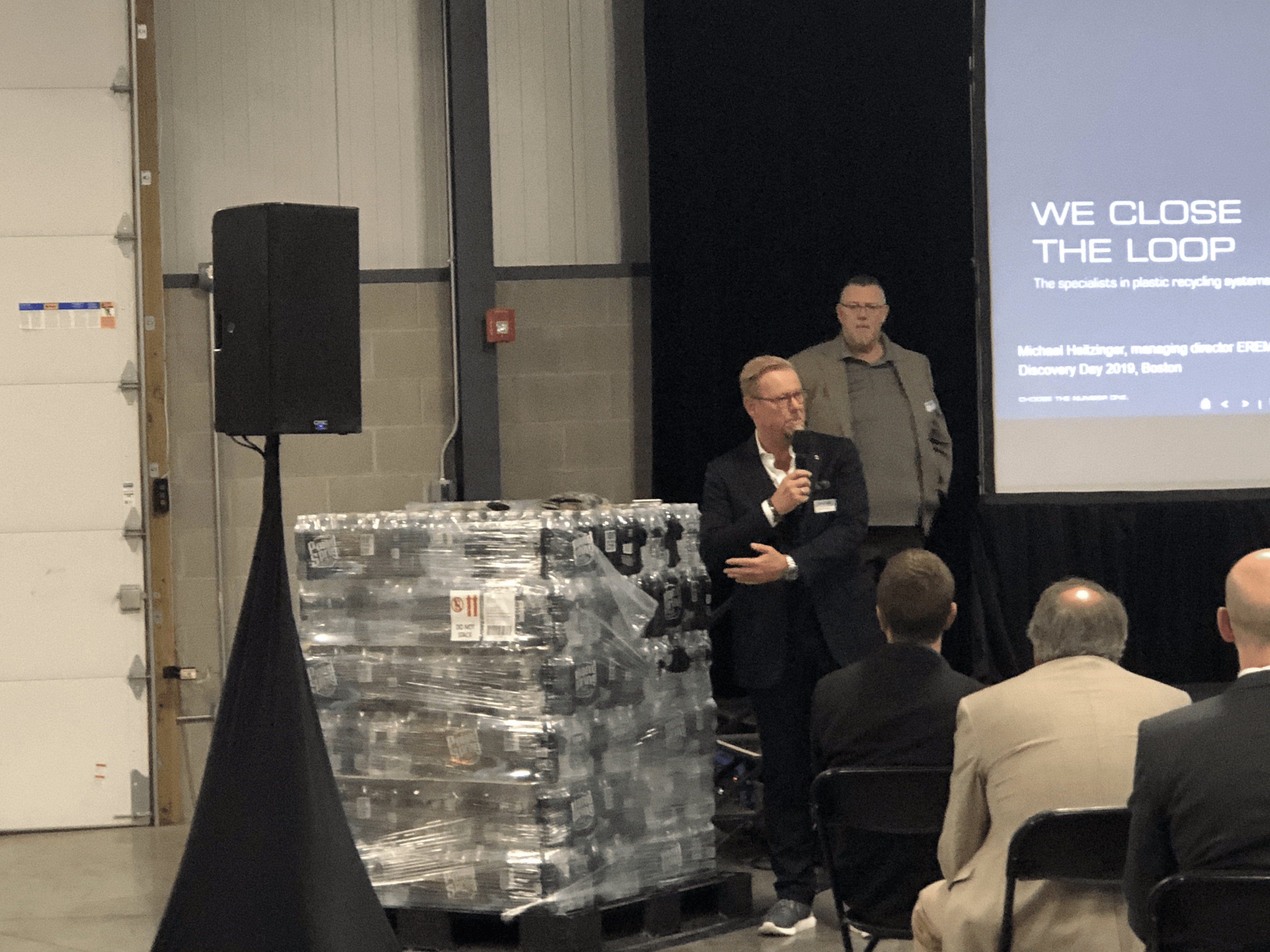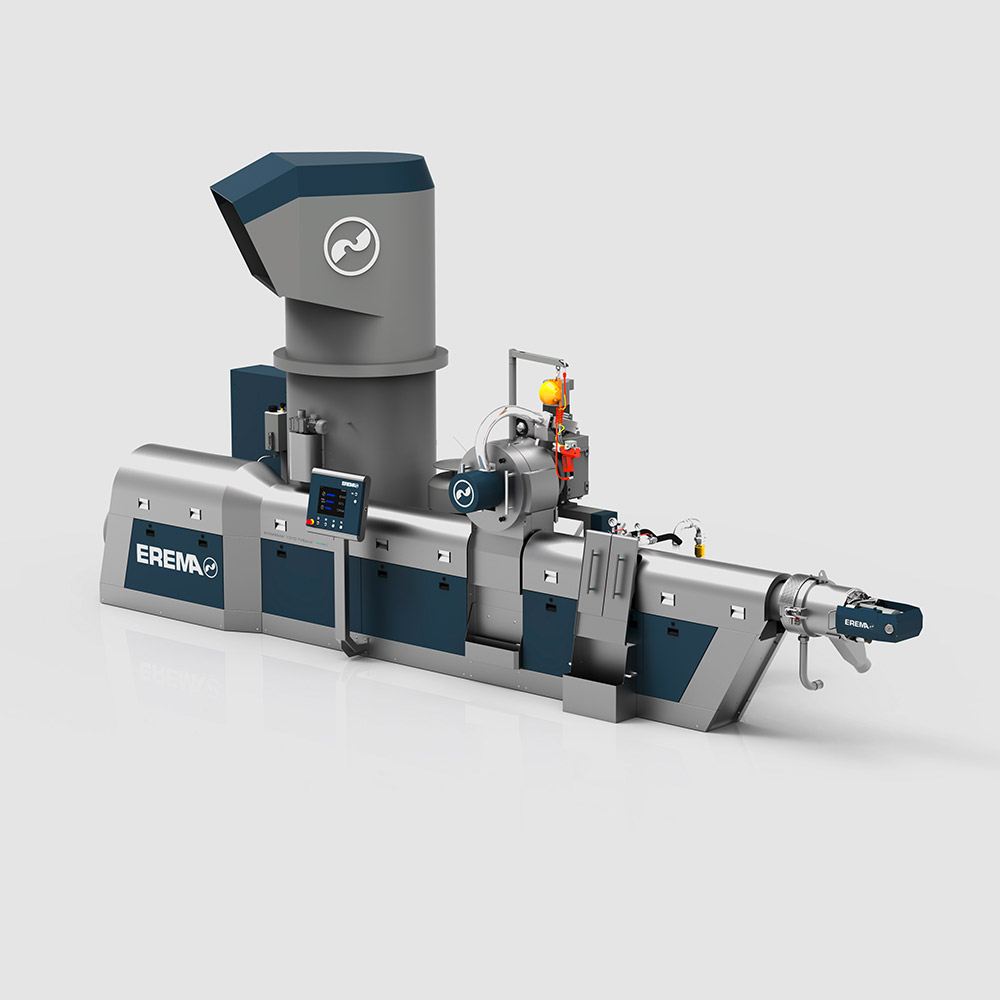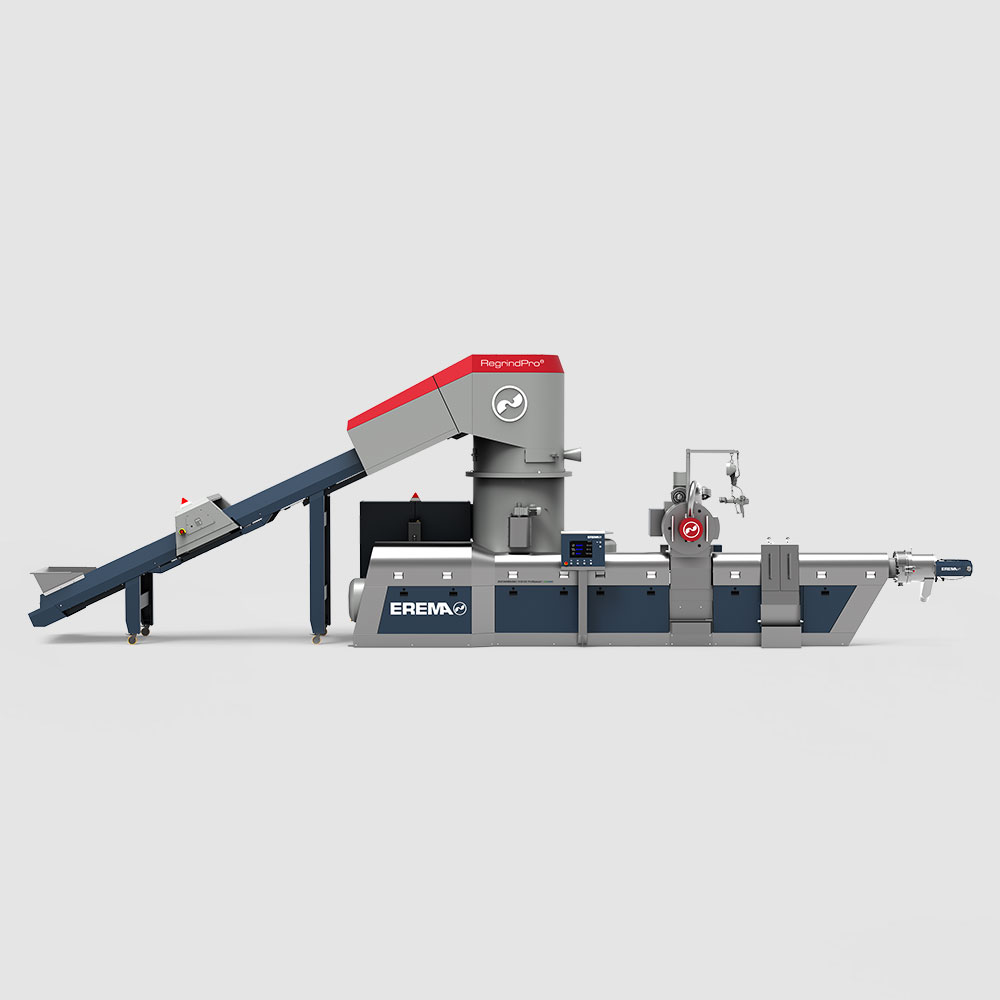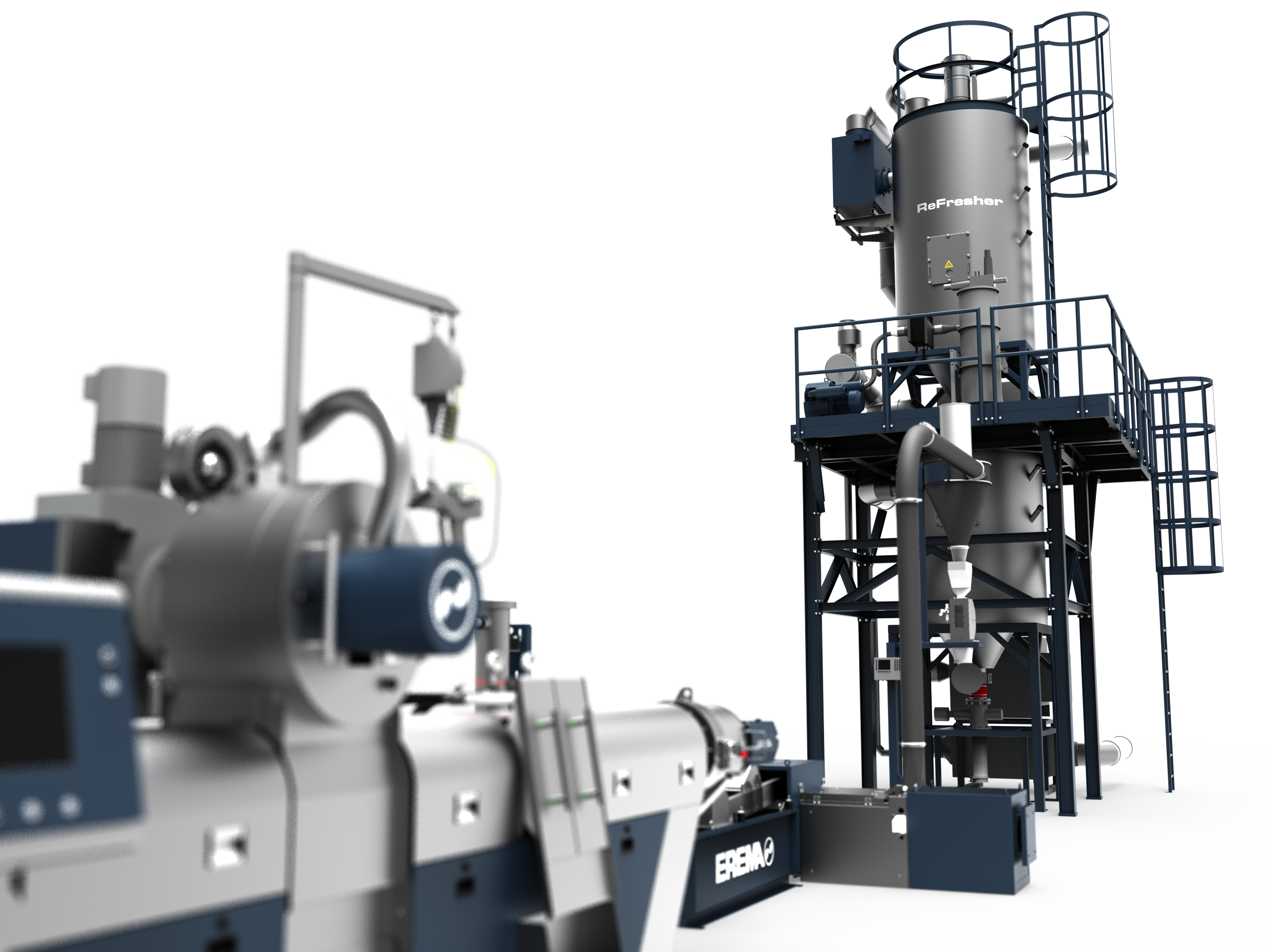
Post-consumer plastics are often a mix of various types of plastic materials, often printed, many times contaminated, and likely containing high moisture content.
EREMA machines are flexible when it comes to processing any type of plastic mixture.
EREMA INTAREMA® TVE Plus® machinery is known for producing high-quality recyclates and producing economic value. The INTAREMA® TVE Plus® machines combine melt-filtration, homogenization, and degassing in a single step, effortlessly processing plastics with full-surface and multiple-layer printing, heavily contaminated and very moist film waste.
Also in processing regrind material, the typical configuration of the INTAREMA® TVEPlus® system with filtering before degassing brings quality advantages that have a positive effect on the end product.
Compared with recycling machines of the same size, Counter Current technology ensures a much higher throughput while delivering a highly profitable pellet quality. All EREMA post-consumer machines are equipped with Counter Current technology.
EREMA machines are known for their robustness. This applies to components such as extruder screws, which EREMA has manufactured by 3S - a company that is part of the EREMA Group. High-quality and a perfect match are guaranteed. With the result that EREMA machines are the benchmark in terms of durability and operational reliability.

Here we started with heavily printed plastic wrap
Here's the melt as the process starts
And the final, high-quality pellets
Careful processing for high quality end product

Careful processing for high quality end product

Careful processing for high quality end product

Careful processing for high quality end product

The gentle way to achieve top quality
Clean performance
The all-rounder

The gentle way to achieve top quality
Clean performance
The all-rounder

The gentle way to achieve top quality
Clean performance
The all-rounder


Recycling odor, especially in post-consumer recycling, is an issue both during the recycling process and after, when the pellets themselves can carry undesirable odors.
Such odors are usually caused by organic materials, including cellulose and food contamination.
When present these organic materials can significantly reduce the value of the recycled plastic as surely as can deficiencies in mechanical properties or color. Nobody wants smelly pellets. To make circular economy in plastics a reality we need quality pellets that can make new parts.
EREMA’s Recycling system, in combination with ReFresher technology, minimizes odor, depending on input material and processing, to what can be essentially odorless.
Specifically, the ReFresher unit, again depending on input material and operation, can reduce odor to less than 0.1 parts per million (Limonene tracer content, gas chromatograph). The ReFresher unit, efficiently discharges volatile, smelly substances with hot air as a carrier gas.
If you want pellets that don’t smell and to produce high value products—talk to us or download our related technical article.
The FDA regulates recycled plastics for food-contact applications. They manage how companies in the recycled plastics and related plastic recycling technology industries can ensure that recycled plastics destined for food packaging are safe for use in the US.
Consumer demand for the responsible use of plastics is increasing, as we all see the outcomes of irresponsible plastics management in the environment, such as the Great Pacific Garbage Patch.
Leading consumer brands are responding to this surge in pressure by instituting aggressive goals to utilize recycled plastics in their packaging and products. Food products businesses in particular are realizing that the continued application of singly-use plastic containers ultimately is going to harm their brands and businesses and are responding.
In order to manage food safety, the FDA has established a process for independent regulatory review, or “premarket clearance” for plastics produced by post-consumer recycling processes. The FDA process is designed to manage the composition of the plastic at the end of the process, as opposed to dictating what process was used to manufacture the end product. Under this standard, recycled plastics destined for food-contact must meet the same regulatory requirements that they have in place for virgin plastics bound for food-contact.
Under the FDA regulations, all food-contact materials, like plastics packaging must be of a purity suitable for their intended use as defined by GMPs or Good Manufacturing Practices. The FDA has established guidelines for the use of post-consumer recycled plastics to establish their safety for food packaging.
In setting their guidelines, the FDA is worried about three things. Their first worry is that contaminants from post-consumer plastic may end up in the post-consumer recycled product and may contact food. The second worry is that post-consumer plastics being recycled may not themselves be regulated and approved for food use. The third worry is that adjuvants (products used in the production process not suitable for food contact) might be introduced as part of the recycling process.
The FDA has made clear that the plastics products recycler and packaging manufacturer must demonstrate that the contaminants from prior use of the plastic to be recycled are sufficiently removed in the recycling process.
In this process, companies take their determinations of the suitability of their food-contact quality recycled plastics process to the FDA for review.
A satisfactory Letter of No Objection (sometimes called an “NOL” or No Objection Letter”) specifies the identity of the plastic being evaluated and whether the recycling process is physical or chemical. The FDA will determine whether they’ve imposed conditions or limitations on the use of the post-consumer recycled material.
The FDA is particularly concerned about post-consumer plastics that have been through a recycling process multiple times, picking up a range of contaminants along the way, or which might have carried hazardous chemicals such as pesticides, automotive chemicals, fuels, solvents or whatever else a consumer might have temporarily used a container for.
The FDA provides guidelines for testing a virgin polymer that is first exposed to a range of ‘surrogate contaminants’. These surrogate contaminants are selected to represent a range of chemicals that are used by, or would be accessible to consumers. When the virgin polymer samples are exposed to the range of potential contaminants (now called a ‘challenged’ plastic, or polymer) it is run through the manufacturer’s recycling process for testing of the process’s ability to remove this range of contaminants.
As an additional precaution, most consumer brands are limiting the amount of post-consumer recycled plastics in their food-contact packaging to less than 50%. This dilution with virgin material is a way to further dilute any miniscule contaminants that might make their way through even a robust decontamination process.
EREMA has received a Letter of No Objection from the FDA for it’s “secondary recycling process (a so-called as “super clean” process) in producing post-consumer recycled high-density polyethylene (PCR-HDPE) material that is suitable for food-contact. The PCR-HDPE material is intended for use at levels of up to 100% recycled content in manufacture of milk and juice bottles, meat trays, disposable tableware and cutlery under Conditions of Use (COU) E - F, as described in Table 2, which can be accessed from the Internet in the Packaging and Food Contact Substances section under the Food topic at www.fda.gov.”
You can access the FDA Letter of No Objection for EREMA here.